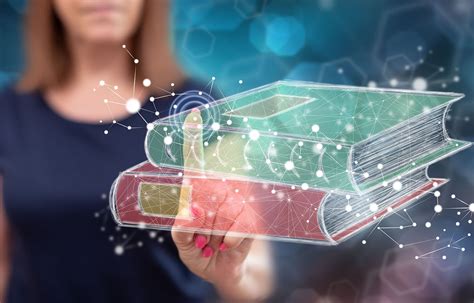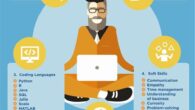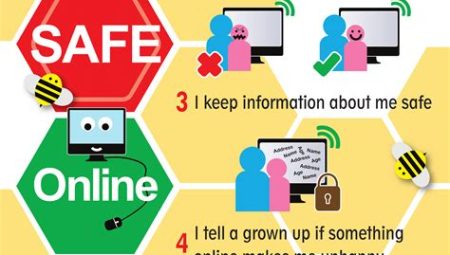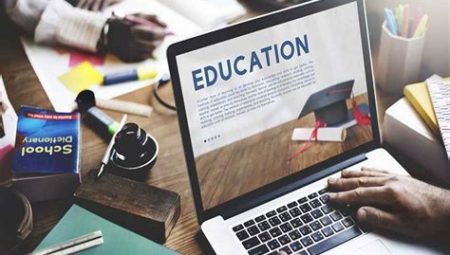In today’s fast-paced and ever-changing world, the integration of technology in education has become more important than ever. Educational technologies are revolutionizing the way students learn and engage with their studies, and the impact is nothing short of transformative. From personalized learning experiences to the use of virtual reality and artificial intelligence, the possibilities are endless. In this blog post, we will explore the numerous benefits of embracing educational technologies in the classroom and beyond. We will delve into the ways in which digital tools enhance student engagement and enable personalized learning. Additionally, we will discuss the implementation of flipped classrooms and the effectiveness of online learning platforms. The role of artificial intelligence in education, the use of gamification techniques, and the importance of digital literacy skills will also be examined. Join us as we navigate through the digital age and explore how educational technologies are shaping the future of learning.
Table of Contents
Benefits of educational technologies in classrooms
Educational technologies have revolutionized the way students learn and interact in the classroom. The use of digital tools such as interactive whiteboards, tablets, and educational software has shown numerous benefits in the learning process.
One of the key advantages of educational technologies is the ability to cater to different learning styles. Students have the opportunity to learn at their own pace and in a way that suits their individual learning needs.
Additionally, technology integration in the classroom has been shown to increase student engagement. Interactive lessons and multimedia resources capture students’ attention and make learning more enjoyable and impactful.
Another benefit of educational technologies is the access to a wealth of information and resources. Students can conduct research, access educational videos, and collaborate with their peers using online platforms, expanding their learning opportunities beyond the physical classroom.
Enhancing student engagement through digital tools
Student engagement is a crucial factor for successful learning outcomes. With the integration of digital tools in the classroom, educators have a powerful means to enhance student engagement and participation.
One of the key benefits of using digital tools is the ability to create interactive and dynamic learning experiences. By incorporating multimedia elements such as videos, simulations, and interactive presentations, teachers can capture the attention of students and make learning more engaging.
Additionally, digital tools enable personalized learning experiences by catering to the diverse learning preferences and paces of students. With the use of adaptive learning platforms and personalized learning apps, students can have access to content that is tailored to their individual needs, allowing them to stay motivated and engaged in their learning process.
Moreover, the implementation of digital tools can also facilitate collaborative learning among students. By utilizing online discussion forums, collaborative documents, and virtual group projects, students can interact with their peers and engage in meaningful learning activities that promote teamwork and active participation.
Personalized learning with technology integration
Personalized learning with technology integration is a revolutionary approach to education that allows for customized learning experiences tailored to individual student needs, preferences, and interests. By leveraging educational technologies such as adaptive learning platforms, intelligent tutoring systems, and data analytics, educators are empowered to create personalized learning pathways for students, catering to their unique learning styles and pace of learning.
One of the key benefits of personalized learning with technology integration is the ability to address the diverse needs of students. By utilizing digital tools and resources, teachers can provide targeted support to students who may require remediation or additional challenges, ensuring that every student has the opportunity to thrive and succeed academically.
Furthermore, the integration of technology in personalized learning allows for the collection and analysis of real-time data on student performance, enabling educators to make data-informed decisions and interventions to support student success. This data-driven approach to personalized learning can lead to improved student outcomes and a more efficient use of instructional time and resources.
In essence, personalized learning with technology integration empowers both educators and students by providing a dynamic and adaptive learning environment that caters to individual needs and fosters a deeper level of student engagement and motivation. As technology continues to advance, the potential for personalized learning to transform education and enhance student outcomes is limitless.
Implementing flipped classrooms for active learning
Implementing flipped classrooms for active learning can revolutionize the traditional approach to education. In a flipped classroom, the conventional method of lecturing during class time and assigning homework for students to complete at home is reversed. Students engage with the content outside of the classroom through videos, reading materials, or online exercises, and then use class time for discussions, problem-solving, and collaborative activities.
This approach allows students to have a deeper understanding of the material as they have the opportunity to engage with the content at their own pace. It also promotes active learning as students are actively participating in discussions and activities during class time. Implementing flipped classrooms can also improve student engagement as they take more ownership of their learning.
Teachers play a crucial role in implementing flipped classrooms effectively. They need to curate high-quality resources for students to engage with outside of the classroom and create meaningful and engaging activities for class time. Utilizing technology to deliver content and facilitate discussions is also essential for the success of a flipped classroom.
Overall, implementing flipped classrooms for active learning can lead to a more dynamic and interactive learning environment, where students are actively involved in their learning process and have the opportunity to develop critical thinking and problem-solving skills.
Virtual reality and its impact on learning experiences
Virtual reality (VR) has proven to be an innovative and transformative tool in the field of education, offering an immersive and interactive experience for learners. With the use of VR headsets and simulations, students are able to explore and engage with virtual environments that were previously inaccessible. This technology has the potential to revolutionize traditional learning methods and enhance the overall learning experience.
One of the most significant impacts of VR on learning experiences is its ability to bring abstract concepts to life. Through virtual simulations, students can visualize complex theories and ideas in a more tangible and concrete manner, thus improving their comprehension and retention of the subject matter. This unique visual and experiential approach fosters a deeper understanding and appreciation for the material being taught.
Furthermore, VR has the power to cater to different learning styles and preferences. It provides a customizable and personalized learning environment, allowing students to engage with the material at their own pace and level of understanding. This adaptability promotes a more inclusive and accommodating educational experience, ensuring that each student has the opportunity to thrive and succeed.
In addition, the use of VR in education has demonstrated positive effects on student motivation and engagement. The immersive nature of VR experiences captivates students’ attention and curiosity, making the learning process more enjoyable and stimulating. This heightened level of engagement can lead to increased participation, collaboration, and enthusiasm for learning, ultimately contributing to improved academic performance and success.
Exploring the effectiveness of online learning platforms
Online learning platforms have become increasingly popular in recent years, providing students with a flexible and convenient way to access educational materials and resources. These platforms offer a wide range of courses, from academic subjects to professional development, allowing students to learn at their own pace and in their own time.
One of the key benefits of online learning platforms is their accessibility. Students can access course materials from anywhere with an internet connection, allowing them to study on the go or from the comfort of their own homes. This level of flexibility can be especially beneficial for working professionals or those with other commitments.
Furthermore, online learning platforms often utilize interactive and engaging multimedia tools, such as videos, quizzes, and discussion forums, to enhance the learning experience. This can help to keep students motivated and engaged with the material, leading to improved retention and understanding.
Overall, online learning platforms have the potential to transform the way we access and engage with educational content, making learning more flexible and accessible than ever before.
The role of artificial intelligence in education
Artificial intelligence (AI) has been increasingly integrated into various aspects of education, revolutionizing the way students learn and teachers teach. AI technology is playing a vital role in developing personalized learning experiences for students, catering to their individual needs and learning pace. By using AI algorithms, educators can analyze students’ performance data and provide customized guidance, ensuring that each student receives the support they need to succeed.
Furthermore, AI in education is also enhancing the assessment process, allowing for more accurate and timely feedback. With the help of AI, teachers can automate the grading process, freeing up more time to focus on developing meaningful learning experiences. Additionally, AI can identify patterns in student behavior and learning preferences, enabling educators to create targeted interventions and resources.
Moreover, AI is being utilized to develop intelligent tutoring systems that can adapt to each student’s learning style and pace. These systems use advanced algorithms to provide real-time feedback and support, simulating the role of a human tutor. As a result, students can receive personalized, adaptive learning experiences that cater to their unique needs and challenges.
In summary, the role of AI in education is crucial in transforming traditional teaching and learning methods. Its ability to provide personalized learning experiences, enhance assessment processes, and develop intelligent tutoring systems makes AI a valuable tool in improving overall learning outcomes for students.
Utilizing gamification techniques to enhance learning outcomes
Gamification is the integration of game elements and mechanics into non-game contexts, such as education, to enhance engagement and motivation. By incorporating gamification techniques into the learning process, educators can create a more dynamic and interactive environment for students, leading to improved learning outcomes.
One of the key benefits of utilizing gamification techniques in education is the ability to make learning more enjoyable and entertaining for students. By incorporating elements such as leaderboards, badges, and rewards into the classroom experience, educators can create a sense of competition and achievement that motivates students to actively participate in their own learning.
Furthermore, gamification techniques can also help students develop important skills such as critical thinking, problem-solving, and collaboration. Through interactive games and activities, students are encouraged to think creatively and work together to overcome challenges, leading to a more meaningful and immersive learning experience.
Overall, the implementation of gamification techniques in education has the potential to transform the traditional approach to teaching and learning, making education more engaging, interactive, and effective.
Empowering teachers through technology-enabled teaching methods
Technology has revolutionized the way teachers can educate their students, providing them with a wide range of tools and resources to enhance their teaching methods. With the integration of educational technologies in the classroom, teachers are empowered to create dynamic and interactive learning experiences for their students.
By leveraging digital tools, teachers can personalize the learning experience for each student, catering to their individual needs and learning styles. This allows for a more engaging and effective learning environment, as students can access resources and materials tailored to their specific requirements.
Flipped classrooms have also become a popular method for active learning, enabling teachers to utilize technology to provide students with pre-recorded lectures and materials to review outside of the classroom. This allows for interactive and collaborative activities to take place during class time, promoting engagement and participation.
Overall, the integration of technology-enabled teaching methods empowers teachers to effectively deliver their curriculum and prepare students for the digital future, equipping them with essential digital literacy skills for success in the modern world.
Preparing students for the digital future: Digital literacy skills
As the world becomes increasingly digital, it is essential for students to develop strong digital literacy skills to succeed in the future. Digital literacy encompasses the ability to find, evaluate, utilize, share, and create content using information technologies and the internet. In today’s digital age, students need to be equipped with the knowledge and skills to navigate, understand, and critically analyze digital information, as well as effectively communicate and collaborate in online environments.
One way to prepare students for the digital future is to integrate digital literacy skills into the curriculum across all subjects. Whether it’s conducting online research for a history project, creating multimedia presentations for a science experiment, or collaborating with peers on a digital platform for a group assignment, incorporating digital literacy into daily learning experiences can help students develop the necessary skills for the future.
Furthermore, educators can also provide opportunities for students to engage in hands-on activities that require the use of digital tools and technologies. This can range from coding and programming activities to learning how to analyze and interpret data using digital tools. By exposing students to a variety of digital experiences, educators can help them become proficient in using technology as a tool for learning and problem-solving.
Additionally, fostering a culture of digital citizenship and responsible use of technology is essential in preparing students for the digital future. Educators can teach students about online safety, privacy, and ethical behavior in the digital world, as well as encourage them to be responsible digital citizens. By promoting digital citizenship, students can develop a strong understanding of their rights and responsibilities in the digital world, as well as the skills to navigate potential challenges they may encounter online.






